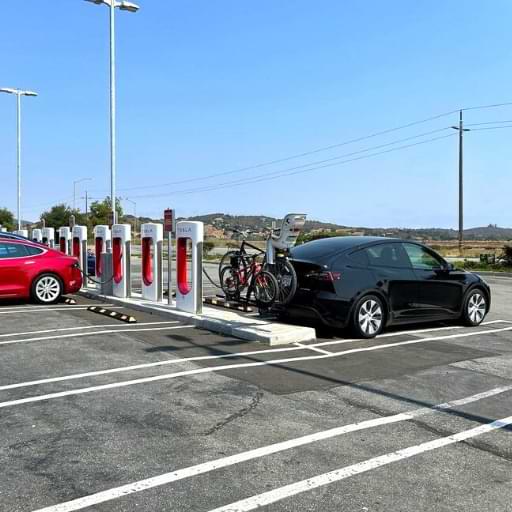Tesla cabin overheat protection: function and what’s new?
We use affiliate links and may receive a small commission on purchases. Read more about us.
A tweet posted on July 12th by Elon Musk confirmed that the next software update will allow the users to set the temperature to activate the cabin overheat protection feature.
Previously, the Cabin Overheat Protection feature used to kick in when the interior temperature went past 105-degree Fahrenheit or 40-degree Celsius.
If that knocks you to learn about Tesla Cabin Overheat Protection and how the system works, I am here to stretch out the subject a bit further.
No matter whether you are a new or old Tesla user, this article is here to solve all of your questions regarding the Tesla Cabin Overheat Protection feature.
If that is why you are here, let’s get started-


What is Tesla cabin overheat protection?
Tesla cabin overheats protection is an automatic cooling system that keeps the car’s interior temperature within 105-degree Fahrenheit. It’s a handy function when you exit the car and leave it parking for the whole day.
The sun is already burning outside, and the car will obviously turn into an oven sooner or later. But the overheat protection system gets air inside the car through the air intake and cools down the temperature.
- Automatic car’s interior cooling system.
- Keeps the temperature within 105-degree Fahrenheit.
- Maintains the optimum temperature while the car is parked.
- It works for 12 hours in a row.
- While operating, it consumes a certain amount of charge.
Well, you can use a Tesla car cover while it’s parked outside your home. But it's difficult to do the same thing when it's parked outside a super shop or office, or market.
Therefore, overheat protection comes in handy. Keeping the optimum temperature level inside means, whenever you get inside the car, the excessive heat outside won’t bother you anymore.
How does Tesla overheat protection works?
Tesla overheats protection works using the car's own battery. It may be a concern for many of the users who are always worried about the battery life. However, it doesn't have that much battery.
One thing you need to know is that the system doesn't work automatically by detecting overheating conditions in the car. You need to turn on the overheating protection from the settings, and only then it will work.
- It works for up to 12 hours after the rider exits.
- The air intakes push air inside the car.
- Then it suddenly stops and lets the temperature cool down.
- After a while, it again provides air inside.
- If the temperature rises, it will go down again.
- The temperature never goes above 40-degree Celsius.
- You should turn on the AC to keep the temperature down.
- Turning off the AC will reduce the battery drainage.
Though the temperature won't go above 105-degree Fahrenheit or 40-degree Celsius, there's one condition. You must turn on the protection system along with AC unless the temperature can cross the limit.
How do you turn on Tesla cabin overheat protection?
You may have already known that you have a special feature in the Tesla model to keep the interior cool for up to 20 hours. But how could you turn on the protection? Don't worry because it's not a daunting task.
Follow the steps below and turn on the protection before you leave the car into the parking slot under the burning sun.
- Go to the bottom of the Tesla screen.
- Click on the car icon on the left bottom corner.
- A quick control panel will appear on the screen.
- Now, click on safety and security.
- Scroll down there.
- You will find cabin overheat protection below.
- Click on the “On” button to turn the function on.
When you have got the protection menu, one question you may be asking yourself. The question is what does it mean by "No A/C"? Well, there are three options including on, off, and no AC.
No A/C refers to on as well, but without AC. It's kind of a battery-saving option. Compared to the AC service, it will consume less battery. But there's a major downgrade to this particular option.
It is unable to keep the temperature below 105-degree Fahrenheit. It will cool down the interior of the car but without any guarantee of keeping the inside temperature at an optimum level.
Therefore, you shouldn’t turn on this option if you want to have full service out of the overheat protection function.
Impact of overheat protection on battery state of charge
To be honest, the overheat protection has a little bit of effect on the battery state of charge of your Tesla model. Of course, the impact is different in different models but won't differ that much.
Before going on to the battery drainage, there’s something you need to know. The overheat protection system won’t work if the battery goes down to 20% or less. It will automatically shut off.
- It drains around 5% to 7% of the charge while it's on.
- It loses around 12 to 20 rated miles.
- The difference between on and off situation isn’t more than 3% or 4%.
- It consumes less battery if the AC is off.
- The protection doesn’t work when the battery is below 20%.
The stats of charge drainage or rated miles losing varies from the situation of the car. It may not match you, although our research team has thoroughly gone through different situations. You may also like to read about Tesla SSD.
Is it bad for Tesla's interior to get warmer?
It's bad for Tesla's interior to get warmer if the temperature goes too much high. However, most Tesla models can withstand temperatures up to 150-degree Fahrenheit. In that case, your car may be fine without overheating protection.
But, the overheating can still damage the interior of the car as well make you feel discomfort.
- Damages leather seats or other car parts.
- There can be unusual cracking or fading.
- It can turn the car into a heating oven.
- The rider can sweat excessively.
The warmer it gets the worse it will be for the rider to enjoy the ride. Therefore, it's better to keep the temperature at an optimum level.
How to protect Tesla model from overheating?
There's a lot of ways to protect the Tesla model from overheating. Well, cabin overheats protection is the easiest one among all other ways. So, we'd like to let you know the other ways to reduce overheating.
- Install sunshade on the front and rear.
- Use protective window tint films.
- Cover the car while it’s in the garage.
- Try not to leave it under direct sunlight.
what's new in tesla overheat protection feature in 2022?
Until now, the Cabin Overheat Protection feature is set to kick in once the interior temperature reaches 105-degree Fahrenheit. There is no way up until now to adjust that temperature parameter.
However, the next software update is going to bring the new ''NEW''. Users would be able to adjust that temperature limit within a certain range.
The probability is that this range would be between 90-degree Fahrenheit and 120-degree Fahrenheit.











